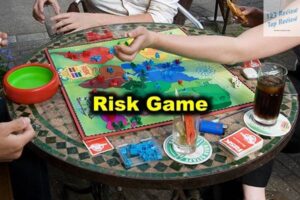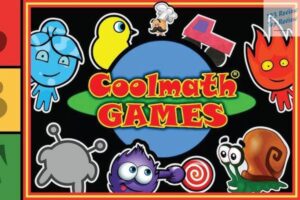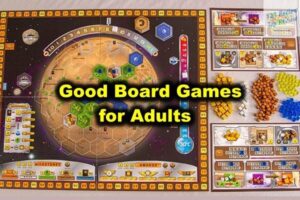In Toca Lab Game, players can experiment with different elements, discovering their properties and reactions by combining them in a virtual laboratory. With its vibrant graphics and intuitive interface, Toca Lab encourages curiosity and creativity, making learning about the periodic table and basic chemistry concepts enjoyable for kids of all ages.
In this article, 123 Review delves into the features of Toca Lab, its educational benefits, and why it’s a must-try for young science enthusiasts.
Gameplay Mechanics
Element Discovery and Experimentation
“Toca Lab” offers an exceptional introduction to the fascinating world of chemistry through a playful and interactive environment. The game centers around the periodic table, where players are tasked with discovering and experimenting with various elements. Each element is represented by a unique, animated character, and players can combine, manipulate, and observe their reactions to uncover new elements. This hands-on approach transforms what could be a dry subject into an exciting adventure, making the abstract concept of chemistry more accessible and engaging for young minds.

The discovery process in “Toca Lab” is carefully designed to encourage curiosity and experimentation. There are no strict rules or penalties for incorrect combinations, allowing players to explore freely without fear of failure. This open-ended structure is particularly effective in fostering a love of learning, as it removes the pressure to succeed and instead rewards creativity and curiosity. As players experiment with different elements, they unlock new ones, each with its own unique properties and characteristics, further expanding their understanding of the periodic table.
The game’s approach to learning through play is evident in how it subtly introduces players to the scientific method. By hypothesizing about the outcomes of different combinations, testing those hypotheses, and observing the results, players engage in a process of trial and error that mirrors real-world scientific experimentation. This experiential learning model not only teaches basic chemistry concepts but also helps develop critical thinking and problem-solving skills that are essential in science and beyond.
Character Interaction and Development
One of the most charming aspects of “Toca Lab” is its personification of chemical elements. Each element is brought to life as a quirky, animated character, complete with unique traits, behaviors, and appearances. These characters are not static; they evolve as players conduct experiments and unlock new elements. This dynamic interaction between the player and the characters adds depth to the gameplay, making the process of discovery feel more personal and engaging.
The characters in “Toca Lab” serve as more than just representations of elements; they become companions on the player’s scientific journey. As players experiment with the characters, they witness their transformations, which adds a sense of progression and achievement. This character development mechanic is particularly effective in keeping players engaged, as it provides a visual and interactive representation of their learning progress. The evolving nature of the characters also encourages repeated play, as players are motivated to discover how each element will change and what new forms it might take.
The design of these characters is both imaginative and educational, striking a balance between entertainment and learning. Each character’s design is inspired by the properties of the corresponding element, subtly teaching players about the unique characteristics of each element. For example, a heavier element might be represented by a larger, more grounded character, while a lighter element might appear as a more whimsical and buoyant figure. This clever use of character design enhances the educational value of the game, making complex scientific concepts more relatable and easier to understand.
Challenges and Rewards System
While “Toca Lab” is primarily an exploratory game with no strict goals or levels, it incorporates a subtle challenges and rewards system that keeps players motivated. As players conduct experiments and discover new elements, they are rewarded with visual and auditory cues that reinforce their achievements. These rewards come in the form of exciting animations, sounds, and the unlocking of new characters, all of which contribute to a sense of accomplishment.
The game’s rewards system is designed to encourage continuous exploration without imposing the stress of traditional gaming challenges. There are no time limits, scoreboards, or penalties for making mistakes, which allows players to experiment at their own pace. This stress-free environment is ideal for young learners, as it promotes a positive learning experience where they can focus on the joy of discovery rather than the fear of failure.
In addition to the intrinsic rewards of discovery and experimentation, “Toca Lab” also provides players with a sense of progression as they fill out their collection of elements. The game subtly tracks the player’s progress, showing which elements have been discovered and which ones remain to be unlocked. This element-collection mechanic adds a layer of challenge that encourages players to keep experimenting until they’ve unlocked every element on the periodic table. This balance of open-ended play and structured progression makes “Toca Lab” both engaging and educational, appealing to a wide range of players.
Game Graphics and Sound
Visual Design and Art Style
“Toca Lab” excels in its visual design, offering a vibrant and colorful aesthetic that immediately draws players in. The game’s art style is both playful and sophisticated, perfectly suited for its target audience of young learners while still being visually appealing to older players. The design of the laboratory, where the gameplay takes place, is filled with intriguing details that encourage exploration. From the bubbling test tubes to the whimsical scientific equipment, every aspect of the game’s visual environment is crafted to spark curiosity and inspire learning.
The character design in “Toca Lab” is another highlight of its visual appeal. Each element character is uniquely designed to reflect the properties of the corresponding chemical element, adding an educational layer to the game’s aesthetics. The characters are colorful, expressive, and full of personality, making them instantly likable and memorable. This thoughtful character design not only enhances the game’s educational value but also makes the gameplay more enjoyable, as players are eager to see how each new element will be represented.
The overall art direction of “Toca Lab” strikes a balance between simplicity and detail, ensuring that the game is visually accessible to young players without being overly simplistic. The use of bold colors, smooth animations, and playful design elements creates an inviting atmosphere that encourages players to dive into the world of science. The visual design is also carefully integrated with the gameplay, with animations and visual effects that reinforce the outcomes of experiments, making the learning process more immersive and engaging.
Audio Effects and Music Quality
The audio design of “Toca Lab” is equally impressive, providing a rich and immersive auditory experience that complements the game’s visual and gameplay elements. The sound effects in the game are playful and varied, with each interaction producing a unique auditory response. Whether it’s the bubbling of a chemical reaction, the whirring of a centrifuge, or the cheerful sounds of element characters, the audio effects add a layer of realism and engagement to the game’s scientific exploration.
The background music in “Toca Lab” is light and unobtrusive, setting a soothing tone that keeps players focused without being distracting. The music is carefully composed to match the game’s playful and educational atmosphere, with melodies that are both calming and subtly stimulating. This balance ensures that players remain engaged in the gameplay while still enjoying a relaxing and enjoyable auditory experience.
The quality of the audio effects and music in “Toca Lab” is a testament to the game’s attention to detail. The developers have clearly invested in creating a soundscape that enhances the overall gameplay experience, making the game more immersive and enjoyable. The combination of high-quality sound effects and music not only enriches the player’s experience but also reinforces the educational value of the game by making the scientific concepts more tangible and memorable.
Educational Value
Learning Elements Related to Science
At its heart, “Toca Lab” is an educational game designed to introduce young players to the world of science, particularly chemistry, in a fun and engaging way. The game’s core mechanic of experimenting with elements from the periodic table serves as a playful introduction to basic scientific concepts. Through hands-on experimentation, players learn about the properties of different elements, how they react with one another, and how new elements are formed. This interactive approach to learning science makes complex concepts more accessible and easier to understand for children.
One of the key educational benefits of “Toca Lab” is its ability to teach scientific concepts without overwhelming players with technical jargon or complicated theories. The game simplifies chemistry into an experience that is both entertaining and informative, making it an ideal tool for introducing young learners to the subject. By focusing on the process of discovery and experimentation, “Toca Lab” encourages players to think critically and creatively, laying the groundwork for more advanced scientific learning in the future.
The game’s emphasis on experimentation also teaches players important scientific principles such as cause and effect, observation, and hypothesis testing. As players mix and match elements to see how they interact, they engage in a process that mirrors real-world scientific inquiry. This experiential learning approach not only helps players understand the basics of chemistry but also fosters a sense of curiosity and a desire to learn more about the world around them. By making science fun and accessible, “Toca Lab” inspires a love of learning that can last a lifetime.
Engagement and Critical Thinking Development
One of the most valuable aspects of “Toca Lab” is its ability to engage players in critical thinking and problem-solving. The game’s open-ended structure encourages players to experiment freely, testing different combinations of elements to see what happens. This process of trial and error is a key component of scientific inquiry, helping players develop critical thinking skills as they make predictions, test their hypotheses, and observe the outcomes. By engaging players in this process, “Toca Lab” helps them develop a scientific mindset that can be applied to other areas of learning.
The game’s design ensures that players remain engaged throughout their scientific journey. The constant discovery of new elements, the evolving character interactions, and the rewarding feedback system all contribute to a sense of progression and achievement. This engagement is further enhanced by the game’s immersive visuals and sound, which create an environment that is both educational and entertaining. By keeping players engaged, “Toca Lab” ensures that they are continually learning and developing important skills, even as they play.
“Toca Lab” also promotes critical thinking by encouraging players to explore multiple solutions to the same problem. Since there are no right or wrong answers, players are free to experiment with different approaches and learn from the results. This freedom to explore and experiment fosters creativity and innovation, as players are encouraged to think outside the box and come up with their own solutions. By promoting this kind of critical thinking, “Toca Lab” helps players develop skills that are essential for success in both science and everyday life.
Conclusion: Is Toca Lab Worth It?
“Toca Lab” stands out as a remarkable educational game that successfully blends the fun of gaming with the rigor of scientific learning. Its engaging gameplay mechanics, combined with its charming visual and audio design, make it a compelling choice for young learners interested in exploring the world of science. The game’s focus on experimentation and discovery not only teaches basic chemistry concepts but also fosters critical thinking, creativity, and a love of learning.
The game’s educational value is further enhanced by its emphasis on hands-on learning and its ability to simplify complex scientific concepts into a format that is both accessible and enjoyable. By introducing players to the periodic table and the properties of different elements, “Toca Lab” provides a solid foundation for future scientific learning. The game’s open-ended structure and rewarding feedback system ensure that players remain engaged and motivated to keep exploring and learning.
For parents and educators looking for an educational game that is both fun and instructive, “Toca Lab” is an excellent choice. Its ability to teach scientific concepts through play makes it a valuable tool for introducing young learners to the wonders of chemistry. Overall, “Toca Lab” is a game that is well worth the investment, offering a rich and rewarding learning experience that can inspire a lifelong passion for science.





